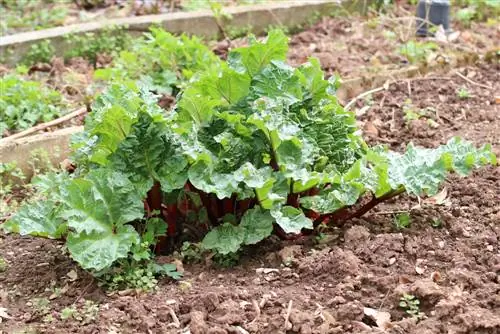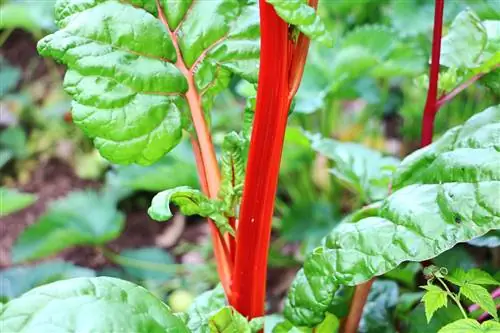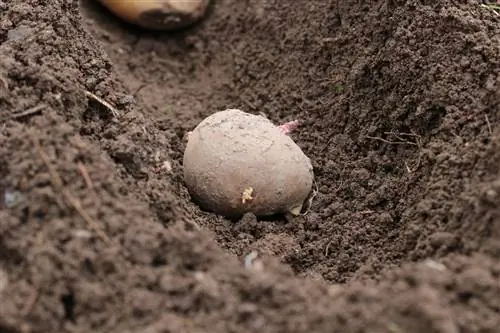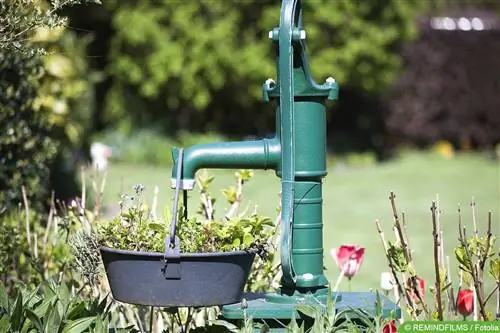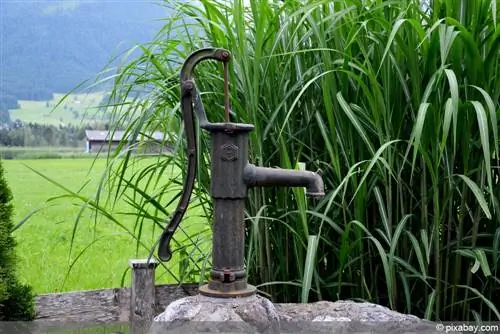- Author admin [email protected].
- Public 2023-12-17 03:39.
- Last modified 2025-01-24 12:45.
If a rhubarb stands in one location for several years, the substrate is used up. This results in weaker growth and lower yields. The plant also becomes more susceptible to diseases and pests. Even regular fertilization cannot compensate for the heavy feeder's consumption. However, the root depth of the Rheum rhabarbarum must be taken into account when moving.
Root depth
Rhubarb flowers can reach a height of up to two meters. The older the plant is and the longer it is in one location, the higher the inflorescence will be. Provided that the conditions at the location are optimal and the plant is sufficiently supplied with nutrients.
But what does this have to do with the root depth of rhubarb?
The height of the flowers is a good indication of how deep the plant's roots reach. These also gain in depth and spread the longer the plant is in the same location. Depending on the nature of the soil and the age of the plant, depths of up to around two meters are possible. This also explains why rhubarb proves to be a stubborn plant.
Unearth
Rhubarb, as a heavy feeder, develops comparatively deep roots. On the one hand, this makes the plant very robust and resilient. On the other hand, it ensures the supply of nutrients and fluids and makes Rheum rhabarbarum an easy-care plant. Despite these advantages and the low effort required to grow rhubarb, it requires larger amounts of nutrients.
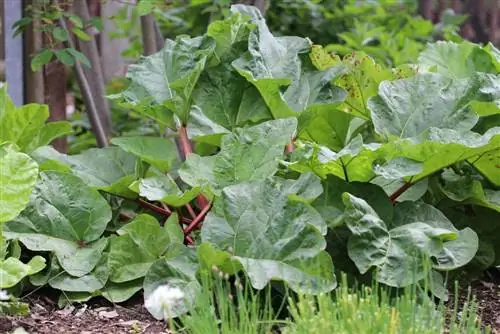
After about ten years in the same location, the substrate is used up. Regular fertilization and the supply of nutrients from the rhubarb plant parts are no longer sufficient to provide the plant with comprehensive care. A change of location or the addition of fresh substrate must be done to ensure continued good yield. To do this, however, you need to know how deep and wide the rhubarb's roots are.
When digging, you should pay attention to the following factors:
Distance
The distance to the plant should be 30 to 50 centimeters. Ideally, the first spade-breaking ceremony is carried out half a meter from the plant.
Width and relaxation
Due to its diameter of one meter, digging up the plant is comparatively laborious. By loosening the soil, the substrate and thus also the weight can be removed in a gentle manner. Above all, care should be taken to ensure that only thin layers of soil are loosened and removed with a rake. Otherwise the roots could be injured.
Depth
As a rule of thumb, two and a half spade lengths should be dug. A depth of 70 to 80 centimeters is even better. This depth preserves a large part of the roots and allows the plant to regenerate quickly and grow new roots without any problems.
Tip:
After digging up the rhubarb, the separated root ends should be allowed to air dry for a few hours. This reduces the risk of mold and rot formation.
Prepare planting hole
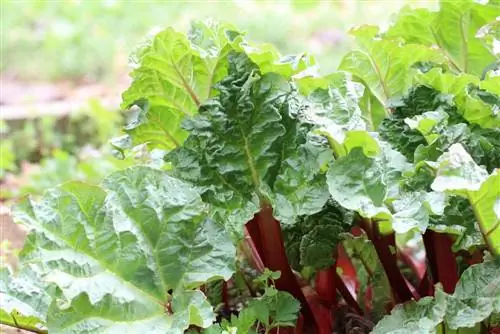
Whether the rhubarb is being moved to a new location or the substrate is simply being replaced - in any case, the planting hole should be prepared accordingly. Just like when digging up Rheum rhabarbarum, there are a few points to consider. These are:
1. Step
Depth and circumference: To give the plant enough space, the planting hole must be at least 70 centimeters deep and should have a diameter of 60 to 100 centimeters. A total of one square meter of space should be available for the rhubarb. This is already necessary due to the length and dimensions of the rods and leaves.
2. Step
Fresh substrate and organic fertilizers make a decisive contribution to the nutrient supply and he alth of the plant. Fresh soil enriched with compost should therefore cover the bottom of the planting hole. After moistening the fresh substrate and inserting the plant, the entire planting hole should be filled with it.
3. Step
The soil should be filled in narrow layers and compacted again and again. In this way, the roots are protected and the plant is given support. Plant parts and remains of the rhubarb can also be incorporated into the upper layers. These serve as organic long-term fertilizer.
The effort required to transplant the rhubarb may seem large at first, but it is only necessary every seven to ten years. The better the plant is fertilized and the soil is cared for, the less often transplanting is necessary.

